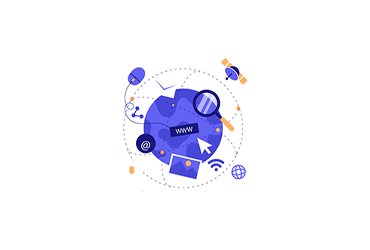
 Mar 06, 2022
Mar 06, 2022
Internet of Things (IoT) refers to enabling virtual and physical objects to exchange data with each other in order to accomplish specific tasks over the Internet, IoT applications have a wide range of uses, including smart homes, smart cities, smart tracking and metering, connected cars, etc. The Internet of Things can be used in various sectors such as health, agriculture, utilities, and transportation.
Machine-to-machine (M2M) applications allow communication between two or more devices without human interactions, as they can use public mobile networks, fixed public networks, and satellites. Examples of M2M include points of sale and automated teller machines.
The words and phrases specified in the CITC regulations shall have the same meaning when used in this regulatory framework, as the following words and phrases shall have the meaning assigned to them below.
Internet of Things (IoT): It means the connection of multiple devices and machines connected to the Internet over multiple license-exempt networks which are the frequency bands that can be used on a common basis without repeated licenses from the Communications and Information Technology Commission and under the terms it defines for such use.
As for things: they mean physical and virtual things that can be identified and communicated with each other
For license-exempt IoT services: It means IoT services provided through LPWAN using license-free frequencies, low bandwidth, battery-powered devices at low bit rates.
As for the term indoor: it means areas located inside personal buildings that are used for non-commercial purposes (homes, private compounds, universities, etc.) and outdoors: these are areas outside personal buildings (streets, public places, parks, etc.).
IoT services can be provided using wired and wireless networks, and can be categorized according to the networks used in: “Internet of things services provided through mobile networks.
IoT services can be provided through mobile networks by service providers licensed by the Communications and Information Technology Commission, such as facility-based licensees, virtual network operators, IoT-VNOs, or any other licenses specified by the Communications and Information Technology Commission. The above-mentioned licenses are available through the Communications and Information Technology Commission website, and the exempted frequency bands are those that some applications can use without the need for prior permission or an individual right to use.
The two main drawbacks are the inability to guarantee quality of service and the typically limited geographic range available (reflecting the lower power limits that apply to these bands), and license-exempt wireless applications cannot claim protection from interference from other users or wireless services, operating in These are common frequency bands and must not, by themselves, cause harmful interference to other radio services.
From a regulator's point of view, license-excluded bands can be more problematic than licensed bands in terms of spectrum reallocation, since it is difficult to prevent the continued deployment of legacy equipment in bands or effectively monitor their use, and therefore there is generally no control over Device numbers or locations, which can make sharing difficult and limit the amount of spectrum that can be used in this way.